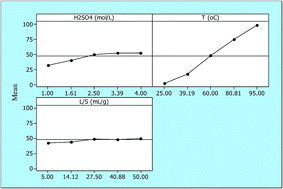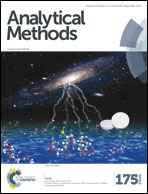Response surface methodology approach to leaching of nickel laterite and evaluation of different analytical techniques used for the analysis of leached solutions
Abstract
The objective of the study was to find the amount of nickel leached or extracted from a low-grade lateritic ore by H2SO4 leaching. In this study, the recovery of nickel and the dissolution of iron were attempted using response surface methodology, namely, central composite design, to find the optimum conditions of leaching for nickel lateritic ore. In the leaching experiments, effects on amount of iron in solution, as well as nickel recovery of various parameters such as concentration of H2SO4, leaching temperature and initial liquid to solid ratio on nickel recovery were examined. The significance of each factor and their interactive effects on measured responses were evaluated using statistically-designed experiments. Two second-order polynomial models of high significance were used to describe the relationships between the responses and factors. The estimated results from the equations showed good agreement with the experimental results. Determination coefficients (adj-R2) of nickel and iron were 99.66% and 99.92%, respectively. Nickel and iron contents (%) of the leached solutions were analyzed by flame atomic absorption spectrometry. The analysis of nickel in the leached solutions was carried out with calibration curves and standard addition techniques. Two analytical techniques were compared statistically by the “t-test”. In addition, to determine whether the effect of aliquot volume taken from the leached solution and the added standard amount from the measurement results, the effect of dilution on the precision of the calibration curve and the accuracy of the standard addition technique were investigated. These techniques were first applied to real samples using the RSM approach and received good results and were validated. The kinetic models of leaching were evaluated based on the “Shrinking core model” at different temperatures and particle sizes. The dissolution kinetics of nickel and iron were determined as “diffusion controlled”.


 Please wait while we load your content...
Please wait while we load your content...